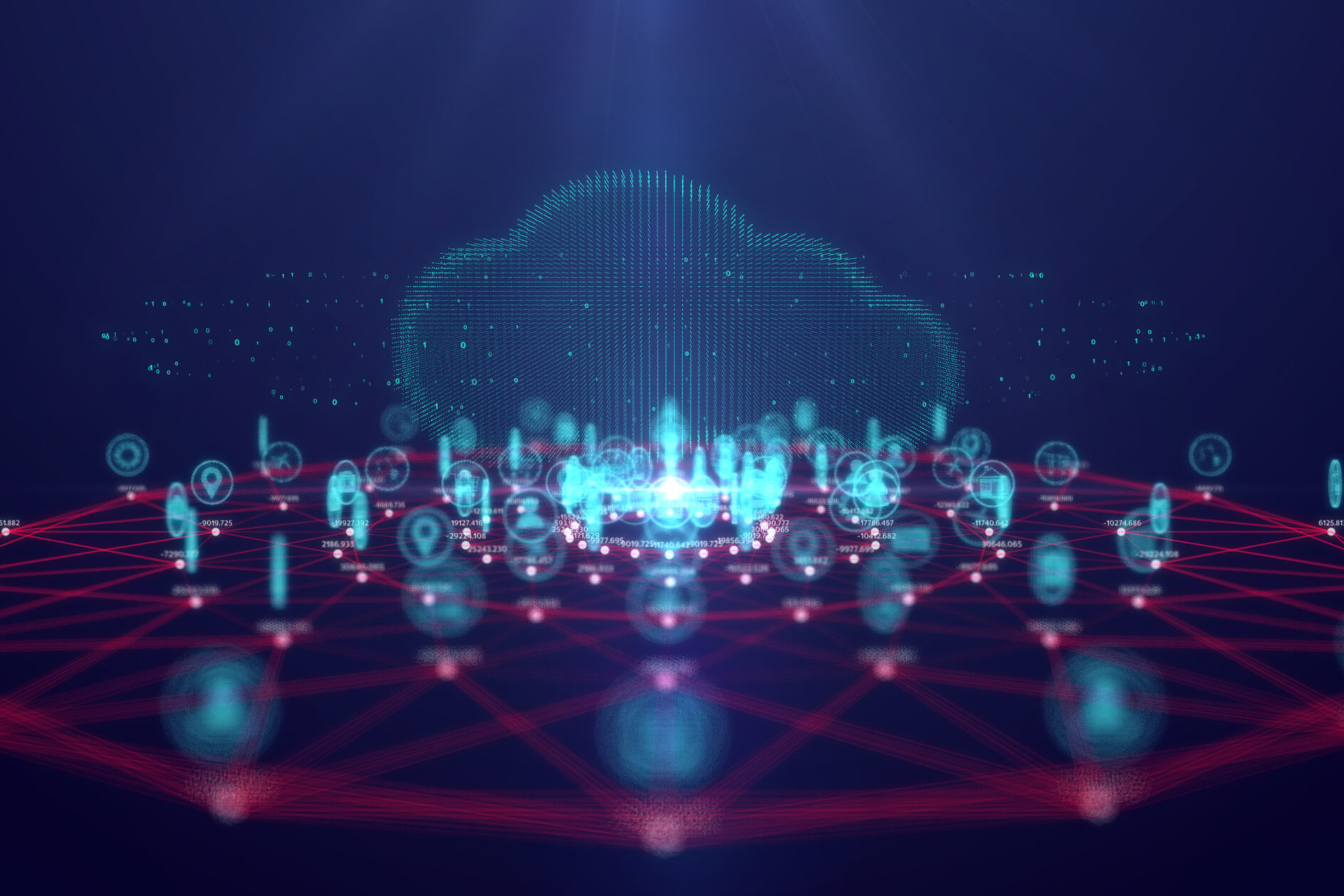 I wonder when people sleep at HYCU! I have been tracking the company for 2.5 years, and it’s been innovating and introducing new solutions at a very nice clip, demonstrating focused execution.
I wonder when people sleep at HYCU! I have been tracking the company for 2.5 years, and it’s been innovating and introducing new solutions at a very nice clip, demonstrating focused execution.
Insight
-
-
Data protection technologies and processes mean nothing unless objectives are not only established and aligned with business and IT objectives, but also measured and improved over time. As organizations increasingly shift to more hybrid and data-intelligent infrastructures, understanding real-world data protection and availability SLAs is becoming more critical for both IT practitioners and the vendors that provide supporting technology.
In order to gain insight into these trends, ESG surveyed 378 IT professionals at organizations in North America (US and Canada) personally responsible for or involved in data protection technology and process decisions for their organizations, specifically those pertaining to the ability to meet SLAs associated with applications/workloads. This research aimed to understand the current state of end-users’ deployments, identify gaps, and highlight future expectations. Tolerance for downtime, downtime metrics, and real-world SLAs in the context of actual data loss were studied against the backdrop of availability technologies and methods, including hybrid environments.
-
For the last decade, IT pros have mapped their career paths to server virtualization and have truly become heroes inside their organization. Now, they have the opportunity to accelerate their careers with containers as they map closer to modern application development. Tune in as Scott Sinclair and I share our observations on VMworld 2020 and what the future holds for IT professionals.
-
The acceleration of digital workspaces has been fascinating to observe, as businesses have had to flip the switch to remote work. Businesses have found themselves exposed and underprepared, but platforms like VMware Workspace ONE are helping organizations enable remote work for employees with confidence. How organizations managed & maintained applications and devices was slowly rounding the curve 12+ months ago. Now, organizations are living the benefits real-time with the help of VMware. Please listen in as I share some observations from VMworld 2020 and keep tuned in as Enterprise Strategy Group focuses on user experiences and employee monitoring.
-
Anton Chuvakin knows his stuff, so I was excited to have him participate in Enterprise Strategy Group’s SOAPA video series. In part 2 of our video, Anton and I chat about:
- Security data. I mention to Anton that many SOC teams are buried in large volumes of security telemetry and then ask if we are trying to collect, process, and analyze more data than we need. Anton responds that we have too much “dirty data” that really isn’t useful. Therefore, the challenge is understanding which telemetry is useful, how it’s useful, and which other data elements we need for data enrichment to improve the efficacy and efficiency of our analytics.
- Common Chronicle use cases. Speaking of data, Google Chronicle is unique in that customers can keep security data on-line for long periods of time (without a hefty price tag). What do customers do with this data? Anton mentions the most common Chronicle use cases are incident response and threat detection. He also says that Chronicle is the first security platform to include threat hunting as a core function. No, these use cases aren’t unique, but Chronicle’s approach is.
- The tradeoff between security efficacy and complexity. This will always be a balancing act because security analytics and operations are difficult by default. Anton doesn’t believe there will ever be a magic single solution. Rather, best-of-breed tools interoperability will improve through API integration. Kind of sounds like SOAPA.
- SOC modernization. A nebulous term from the start, so I ask Anton for his definition. Anton describes SOC modernization across people, process, and technology, highlighting things like distributed/integrated tools, changing skill sets and specializations, and broader processes beyond alert triage – like threat hunting and data exploration.
- The future of SOAPA. I always ask my guests to predict the future of the SOC and SOAPA, so it was somewhat surprising that Anton chose to focus on the human element. Despite technologies like machine learning and process automation, Anton insists that we will still need highly motivated and skilled SOC analysts who understand the threat landscape and use their experience and intuition to make sense of the data. I couldn’t agree more.
Many thanks to Anton and the Google Chronicle team for participating in the SOAPA video series. Look for more SOAPA videos soon.
-
 It’s hard to believe that almost exactly a year ago, on October 14, 2019, Commvault launched Metallic, which is now an award-winning solution. As a product guy, I know from experience how difficult but rewarding it is to get an award at VMworld for your solution. A one-year old solution with a best in show is very impressive. Well done Metallic team! More importantly: well executed!
It’s hard to believe that almost exactly a year ago, on October 14, 2019, Commvault launched Metallic, which is now an award-winning solution. As a product guy, I know from experience how difficult but rewarding it is to get an award at VMworld for your solution. A one-year old solution with a best in show is very impressive. Well done Metallic team! More importantly: well executed!The stakes are high in this vendor space with intense competition (including in the SaaS backup/DR segment) as end-users accelerate their digital transformation and rely on data even more than before. Not to mention the ransomware attacks intensification. The present and future of BC/DR are “cloudy” and, based on our research, we expect to see organizations continuing to adopt data protection as a service moving forward, and an evolution toward intelligent data management and data reuse. These are very favorable trends.
Let’s look at the execution side of the equation: the addition of Manoj Nair a few months ago as GM built on the original momentum culminating in the recent partnership announcement with Azure, based on a long-standing relationship between Commvault and Microsoft. This is where strategy meets execution, with a meaningful partnership based on years of “dancing” together. It’s something that I firmly believe will in time differentiate this offering from others where everyone dances with everyone.
Let me summarize some highlights of one quick year. Metallic launched October 14th 2019. Since then:
- Strategic MSFT Partnership announced.
- Azure Marketplace launch (Office 365).
- Feature expansion: Hyper V Support.
- Manoj Nair becomes GM.
- Metallic offers free endpoint offer to help with the shift to a remote workforce.
- CAD Expansion.
- Metallic partners with Zones (Office 365 Backup and Recovery).
- Feature expansion: Azure Blob & File Support.
- Azure Marketplace Launch (Endpoint).
- New eDiscovery and GDPR compliance features + support for more Microsoft workloads.
- Awards: SaaS Awards finalist; IT World Awards Winner.
- ANZ Expansion.
- Feature expansion: Commvault Command Center Integration.
- Awards: Gold Stevies Winner.
I may have missed some milestones, but you get the idea.
I wrote in other blogs how Commvault has been transforming at a rapid pace, with the acquisition of Hedvig being a move that positioned Commvault ahead of the race in the containers space, many features additions, and of course Metallic, which was designed to be a cloud solution from inception. Both the Hedvig and Metallic moves were what I call “pragmatically visionary.” They were big strategic and market differentiating decisions focused on an informed belief of future market directions (containers, SaaS), and (of course!) they could also be monetized reasonably quickly with the right level of execution and investment. Which takes us to today.
The Metallic offering is now at what seems like a very desirable inflection point and prime for accelerated growth. It’s making Commvault as a whole more competitive and will clearly get in the way of newer SaaS-focused vendors. One year is a long time in the SaaS space. Let’s take a look at where Metallic is one year from now. In the meantime: Happy Birthday!
-
Application modernization efforts are pushing traditional infrastructure to its limits in an era where businesses across nearly every industry depend upon data and applications to not only continue operations, but to also create new opportunities. High performance improves customer experience, accelerates business operations, and can deliver superior business results. Technology is no longer simply a passenger for business operations, it is the now the engine and often the driver as well.
To support this new role, architectures must evolve. The traditional process of moving data to and from the processor has stayed relatively consistent for a while now. Data is moved from a relatively slow but persistent tier of storage into a much faster, non-persistent tier of memory, the processor goes to work on the data, and then the output is put back into the memory, and then moved back to the slow, persistent storage tier. For years, we as an industry have looked at that sequence and said “Why can’t we just keep data in the fast tier? Why move it at all?” Realities of cost constraints, and application limitations, and that lack of persistence have held us back. Now the rise of persistent memory solutions and the Big Memory movement is poised to change all that.
In my interview with Charles Fan, CEO of MemVerge, we discuss Big Memory, MemVerge’s vision to make persistent memory accessible, and discuss what the future of IT might look like in a world where persistent memory is widely available. I hope you enjoy our conversation.
-
I’ve long admired the work of Dr. Anton Chuvakin, head of solution strategy at Google Chronicle. Anton really knows security analytics and operations so now that he’s no longer a Gartner analyst, it was great to have him participate in the SOAPA video series. In part 1, Anton and I discuss:
- Detection as code. In a recent blog, Anton proposes, “detection as code.” The thought here is that you want to “devops” your detections to keep up with threats and strive for constant improvement. This is an intriguing concept that may be especially useful for large organizations in specific industries under attack. We have focused industry ISACs, why not focused industry detection code?
- SOC nuclear triad progression.
Anton’s nuclear triad concept combines logs (SIEM), endpoint telemetry (EDR), and network traffic analysis (NTA/NDR) into a SOC architecture like ESG’s SOAPA. In this era where everything runs on software, Anton believes the triad may be supplemented with specific application visibility telemetry in the future. - New data sources. Anton believes that deeper application visibility is the biggest missing link in security analytics today but perhaps we’ll add more logging sources as well. We both anticipate more use of deception technology as a new telemetry source in an auxiliary role.
- My colleague Dave Gruber and I are knee deep in research in this area, but I wanted to ask an old hand like Anton what he thinks about this new trend. In the past, Anton had a log-centric view of SOC technology, but he is now open to an endpoint-oriented architecture a la XDR. In the short-term, XDR must coexist with SIEM, but the two models are bound for a collision course.
Dr. Chuvakin and I have lived in the same neighborhood for years so it’s great to finally spend some time together. More from Anton on SOAPA and Google Chronicle in part 2 of our video soon.
-
 Extreme Networks recently held its 2020 User Conference, Extreme Connect, the first with Wes Durow, CMO. Keeping in line with the new reality we are all facing, it was a virtual event. However, Extreme took great efforts to give the thousands watching from home the feel of a main stage production and infuse two days’ keynotes, breakout sessions, and executive chats with opportunities to have some fun and be entertained.
Extreme Networks recently held its 2020 User Conference, Extreme Connect, the first with Wes Durow, CMO. Keeping in line with the new reality we are all facing, it was a virtual event. However, Extreme took great efforts to give the thousands watching from home the feel of a main stage production and infuse two days’ keynotes, breakout sessions, and executive chats with opportunities to have some fun and be entertained. -
A really common question this summer has been “What did you do during the pandemic?” Most would respond with projects around the house, maybe learned a new language, etc. However, If you attended the Nutanix .NEXT virtual conference, it would be pretty clear what the team at Nutanix was doing – innovating to deliver new capabilities for their customers. As the image below indicates, Nutanix announced a slew of innovative new solutions designed to enable organizations to Run Better, Run Faster, and Run Anywhere.
-
Cisco Live 2020 got a makeover this year—it went all digital (due to COVID-19) after being held live and in-person for the past 30 years. More than 120,00 people attended the event where Cisco demonstrated its commitment to the community and its customers. There were also plenty of announcements about new and updated services for networking, security, collaboration, and customer experience. In the networking arena, new services announced comprised a series of network insight capabilities covering a wide assortment of products across Cisco’s portfolio—focusing on accelerating digital transformation via enhanced and improved proactive and predictive services, and the vital ability to automate data center networks globally.
For more information or to discuss these findings with an analyst, please contact us.
-
 The day has finally arrived. Today, Snowflake will IPO under the ticker SNOW. Many knew this was coming, even before Frank Slootman was brought in as CEO. But I don’t think it was expected to have as much fanfare as we’re seeing. Buffet (Berkshire Hathaway) is on board. Benioff (Salesforce) is on board. It’s being called the hottest tech IPO of the year. So, what’s the draw? Is it the differentiable technology? Not really. The number of customers? Nope. Customer growth? Impressive, but no. What about the total market size? Getting there. What about the value propositions it offers customers? Well yes, but I would argue there are several competitors that offer similar value propositions. So, what is it? The opportunity. The opportunity is simply massive.
The day has finally arrived. Today, Snowflake will IPO under the ticker SNOW. Many knew this was coming, even before Frank Slootman was brought in as CEO. But I don’t think it was expected to have as much fanfare as we’re seeing. Buffet (Berkshire Hathaway) is on board. Benioff (Salesforce) is on board. It’s being called the hottest tech IPO of the year. So, what’s the draw? Is it the differentiable technology? Not really. The number of customers? Nope. Customer growth? Impressive, but no. What about the total market size? Getting there. What about the value propositions it offers customers? Well yes, but I would argue there are several competitors that offer similar value propositions. So, what is it? The opportunity. The opportunity is simply massive.

 It’s hard to believe that almost exactly a year ago, on October 14, 2019, Commvault launched Metallic, which is now an award-winning solution. As a product guy, I know from experience how difficult but rewarding it is to get an award at VMworld for your solution. A one-year old solution with a best in show is very impressive. Well done Metallic team! More importantly: well executed!
It’s hard to believe that almost exactly a year ago, on October 14, 2019, Commvault launched Metallic, which is now an award-winning solution. As a product guy, I know from experience how difficult but rewarding it is to get an award at VMworld for your solution. A one-year old solution with a best in show is very impressive. Well done Metallic team! More importantly: well executed! Extreme Networks recently held its 2020 User Conference, Extreme Connect, the first with Wes Durow, CMO. Keeping in line with the new reality we are all facing, it was a virtual event. However, Extreme took great efforts to give the thousands watching from home the feel of a main stage production and infuse two days’ keynotes, breakout sessions, and executive chats with opportunities to have some fun and be entertained.
Extreme Networks recently held its 2020 User Conference, Extreme Connect, the first with Wes Durow, CMO. Keeping in line with the new reality we are all facing, it was a virtual event. However, Extreme took great efforts to give the thousands watching from home the feel of a main stage production and infuse two days’ keynotes, breakout sessions, and executive chats with opportunities to have some fun and be entertained. The day has finally arrived. Today, Snowflake will IPO under the ticker SNOW. Many knew this was coming, even before Frank Slootman was brought in as CEO. But I don’t think it was expected to have as much fanfare as we’re seeing. Buffet (Berkshire Hathaway) is on board. Benioff (Salesforce) is on board. It’s being called the hottest tech IPO of the year. So, what’s the draw? Is it the differentiable technology? Not really. The number of customers? Nope. Customer growth? Impressive, but no. What about the total market size? Getting there. What about the value propositions it offers customers? Well yes, but I would argue there are several competitors that offer similar value propositions. So, what is it? The opportunity. The opportunity is simply massive.
The day has finally arrived. Today, Snowflake will IPO under the ticker SNOW. Many knew this was coming, even before Frank Slootman was brought in as CEO. But I don’t think it was expected to have as much fanfare as we’re seeing. Buffet (Berkshire Hathaway) is on board. Benioff (Salesforce) is on board. It’s being called the hottest tech IPO of the year. So, what’s the draw? Is it the differentiable technology? Not really. The number of customers? Nope. Customer growth? Impressive, but no. What about the total market size? Getting there. What about the value propositions it offers customers? Well yes, but I would argue there are several competitors that offer similar value propositions. So, what is it? The opportunity. The opportunity is simply massive.